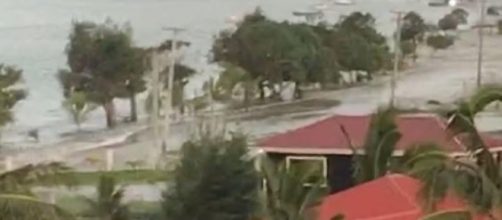The eruption of the volcano left Tonga isolated. It was a natural disaster, and with no access to the internet, the outside world had no information about the after-effects vis-à-vis extent of damages, loss of lives, etcetera. However, the tsunami threat from the undersea volcanic eruption receded around the Pacific. The incident happened Saturday evening. A plume of ash, steam, and gas resembling a mushroom rose above the Pacific waters, and the boom reached Alaska.
The tsunami waves crashed into the shores of Tonga and the people hastened to move to higher ground.
New Zealand Prime Minister Jacinda Ardern said: "Communication with Tonga remains very limited. And I know that is causing a huge amount of anxiety for the Tongan community here." The authorities have yet to obtain feedback from the coastal areas and smaller islands concerning ground realities.
The aftermath of the eruption of the volcano
Prime Minister Jacinda Ardern mentioned about damage to boats and shops along the Tongan coastline. There is a thick film of volcanic dust all over Tonga. That has led to the contamination of water supplies. The authorities advised people to wear masks and drink bottled water. New Zealand plans to send a military surveillance flight over Tonga to ascertain the nature of damages and understand the situation.
Subsequently, they will send supply planes and navy ships. Tonga has been able to avoid any outbreak of coronavirus. Therefore, vaccinated military staff and others will travel to Tonga. That will ensure safety from infection for the locals.
Internet connectivity went for a toss because of the volcano
Tonga depends on an undersea cable from Suva, Fiji, for internet connectivity.
The eruption of the volcano broke the link and isolated Tonga. Today, the internet is an integral part of life, and its non-availability affects every aspect of society. The population of Tonga is around 105,000, and videos posted on social media reveal the fury of the waves. These were strong enough to damage boats as far away as New Zealand and Santa Cruz, California.
As per the U.S. Geological Survey estimates, the eruption was comparable to an earthquake of magnitude 5.8. U.S. Secretary of State Antony Blinken expressed concerns over the incident via Twitter. He said: "The United States stands prepared to provide support to our Pacific neighbors."
Deeply concerned for the people of Tonga as they recover from the aftermath of a volcanic eruption and tsunami. The United States stands prepared to provide support to our Pacific neighbors.
— Secretary Antony Blinken (@SecBlinken) January 16, 2022The region had a series of eruptions in late 2014 and early 2015. That led to a brief disruption in international air travel to the Pacific archipelago.
The volcano generated two feet high waves
The undersea volcano near Tonga in the Pacific sent tsunami waves across the shore, and the people fled to safety. A U.S.-based Pacific tsunami-monitoring center said the waves generated were nearly two feet in height. The Pacific Tsunami Warning Center in Honolulu cautioned sea-level fluctuations and strong ocean currents. Moreover, those near the ocean were directed to move away from beaches and harbors and into safe locations. Satellite images showed a 3-mile (5-kilometer) vast plume of ash, steam, and gas that rose into the air to about 12.4 miles (20 kilometers). That describes the magnitude of the problem. The National Oceanic and Atmospheric Administration said in 2009, a couple of large earthquakes struck midway between Samoa and American Samoa. They generated tsunami waves of up to 72 feet, and the death toll was 192.


